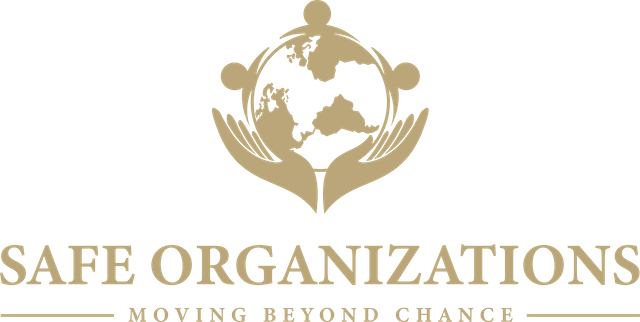Cultivating a Safeguarding Culture: Five Frames of Organizational Wellness

by Kimberley Ducimo
In an era where workplace dynamics are constantly evolving, prioritizing organizational wellness has become a cornerstone of successful businesses. This comprehensive approach not only enhances employee satisfaction and productivity but also fosters a resilient organizational culture. Central to this endeavor are five core components of organizational wellness: Aspire, Assess, Architect, Act, and Advance. By integrating these components into safeguarding strategies, organizations can ensure a safer and healthier workplace that benefits employees, the communities it serves, and the organization as a whole.
1. Aspire: Defining the Destination
To foster a healthy organization, it's crucial to establish a clear understanding of what a robust safeguarding culture entails. Aspiration means envisioning an environment that champions safety, well-being, equity, and resilience. Prioritizing safeguarding as a core organizational value cultivates a sense of security, recognition, and empowerment among staff, which positively influences community engagement. Organizations should strive to dismantle harmful hierarchies and encourage employees to express their authentic selves, celebrating diversity with curiosity and care. This inclusive approach extends to the communities they serve, treating individuals with dignity and respect while involving them as true partners in delivering programs and services.
Activities for Aspiration:
· Develop an Organizational Strategy: Every strategy should explicitly integrate safeguarding as a key measurable indicator of organizational health and success.
· Workshops and Training: Regular training sessions should engage and educate employees on safeguarding, mental health, wellness, equity, and fostering a safe workplace culture.
· Wellness Initiatives: Programs such as wellness days, a no-after-hours work policy, health screenings, and mindfulness sessions promote both physical and emotional well-being.
· Open Forums: Create spaces for employees to share their ideas for enhancing safeguarding, workplace culture, and overall well-being.
By aspiring toward a clearly articulated vision of organizational wellness, organizations lay the groundwork for effective safeguarding practices that resonate with all employees.
2. Assess: Understanding Readiness for Safeguarding
Once an organization has defined its safeguarding strategy, it is essential to evaluate its readiness to implement that vision. This involves setting clear goals and establishing capacity-building markers to guide progress. Key components include robust policies, procedures, and practices that clearly delineate roles and responsibilities in safeguarding efforts.
Setting Goals and Capacity-Building Markers:
· Develop Policies: Policies and their accompanying procedures should embody the organization’s values and commitments to safeguarding, outlining specific actions for employees to foster a safe and healthy workplace. These documents should be clear, actionable, and realistic, avoiding overly aspirational language.
· Quality Assurance: Implement auditing and oversight mechanisms to evaluate the effectiveness of safeguarding initiatives and ensure adherence to established standards.
· Key Performance Indicators (KPIs): Define measurable outcomes related to safeguarding, including policy implementation rates, completion of risk assessments, identification of practice gaps, reporting frequencies, and response outcomes.
By assessing readiness and building a solid foundation for safeguarding, organizations can ensure they are well-prepared to implement effective measures that protect both employees and the communities they serve.
3. Architect: Steps to Implementation
With a clear vision and readiness assessment in place, organizations can begin to outline the specific steps needed to implement effective safeguarding measures within a healthier workplace framework. This process should focus on creating a structure that is both measurable and adaptable.
Steps for Implementation:
· Define Responsibilities: Clearly delineate roles related to safeguarding, ensuring that all team members understand their responsibilities in promoting wellness, equity, and safe community engagement.
· Create a Roadmap: Develop a comprehensive plan that includes timelines, required resources, and benchmarks to track progress and measure success.
· Embrace Agility: Cultivate a culture that values feedback, enabling the organization to fail quickly and adjust strategies based on real-time insights.
This architectural framework not only clarifies expectations but also establishes a robust support system for safeguarding initiatives, ultimately fostering a safer and more inclusive workplace.
4. Act: Implementing and Managing the Journey
Effectively managing the journey of safeguarding initiatives necessitates a well-organized strategy that engages leadership and informs all employees about the importance of safeguarding as an organizational priority. It’s vital that everyone understands what safeguarding means within the organization, the processes for tracking progress, and the shared responsibility that comes with it.
To organize these initiatives effectively, organizations should focus on several key areas:
· Leadership Involvement: It's vital for leaders to promote and participate in safeguarding efforts, showcasing a commitment to these initiatives from the top down.
· Hire Right: Organizations should prioritize hiring competent safeguarding practitioners with the necessary experience to lead these efforts. Furthermore, all candidates across various levels and functions should demonstrate an understanding of their role in fostering a safe and healthy workplace culture.
· Budget Allocation: Ensure that adequate funding, resources, and subject matter expertise are available to implement safeguarding programs with integrity.
· Comprehensive Communication: Regular updates about safeguarding initiatives should be provided, clarifying their rationale and how they align with the organization’s broader goals.
· Shared Responsibility: Emphasize that safeguarding is a collective responsibility, fostering a culture of mutual support and accountability. Leadership should exemplify this commitment through visible actions that reinforce their dedication to safeguarding.
By actively implementing safeguarding, organizations will begin to integrate safeguarding practices into the fabric of their daily operations, creating a safer and more inclusive environment for everyone involved.
5. Advance: Ensuring Continuous Improvement
The journey of safeguarding extends far beyond initial implementation; it requires ongoing assessment and improvement to maintain momentum. Organizations must continually evaluate their safeguarding frameworks, focusing on quality assurance and adapting practices based on new insights and feedback.
Continuous Improvement Strategies:
· Regular Assessments: Conduct periodic evaluations of safeguarding initiatives to identify strengths and areas for growth. Organizations should prioritize integrating safeguarding as a fundamental element in all internal audits.
· Feedback Loops: Establish mechanisms that allow employees to provide input on existing practices, ensuring their perspectives inform future improvements.
· Information Drivers: Leverage data from training sessions, awareness campaigns, and reporting mechanisms to guide governance and cultural enhancements within the organization.
· Governance Engagement: Ensure that the organization's board and leadership are actively involved in understanding the significance of safeguarding. This engagement fosters a culture of integrity, as sound decision-making should be based on data and evidence rather than assumptions, fears, or desires.
By advancing with a focus on continuous improvement, organizations can ensure that their safeguarding practices remain relevant, effective, and aligned with the evolving needs of their workforce.
Conclusion: A Commitment to Organizational Wellness
Integrating the five core components of organizational wellness—Aspire, Assess, Architect, Act, and Advance—through a safeguarding lens establishes a strong foundation for a healthy, equitable, and safe workplace. By intentionally prioritizing well-being, organizations not only boost employee satisfaction but also cultivate resilience and innovation, ultimately contributing to safer engagement with communities.
In today’s rapidly changing environment, a commitment to safeguarding is more crucial than ever. By focusing on these core components, organizations can navigate challenges with agility, ensuring the effectiveness of their safeguarding strategies and fostering a culture of continuous learning. Emphasizing a culture of safeguarding benefits everyone, as organizations have a vested interest in the well-being of both their employees and the communities they serve.
